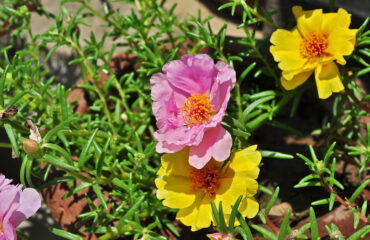Picea abies, commonly known as Norway Spruce, is a prominent coniferous tree native to Europe. Renowned for its tall, symmetrical form and dense, green needles, Norway Spruce is widely used in forestry, ornamental landscapes, and as a Christmas tree. This guide will explore the propagation methods for Norway Spruce, focusing on seed propagation, cutting propagation, and grafting, each tailored to different propagation needs and outcomes.
Picea Abies (Norway Spruce) Propagation Methods:
1. Seed Propagation
1.1. Seed Collection
Seed propagation is the most common method for producing Norway Spruce on a large scale.
- Identifying Mature Cones: Cones mature in late summer to early autumn. Look for cones that are brown and slightly open, indicating they are ready for harvest.
- Harvesting Cones: Collect cones directly from the tree or from the ground if recently fallen. Ensure they are from healthy, vigorous trees to obtain high-quality seeds.
1.2. Seed Preparation
Proper preparation of seeds is essential to promote successful germination.
- Extracting Seeds: Dry the collected cones in a warm, dry place until they fully open. Extract the seeds by shaking or manually separating them from the cones.
- Cleaning and Stratification: Remove the wings and any debris from the seeds. Norway Spruce seeds benefit from cold stratification. Store the seeds in a moist medium (such as peat or vermiculite) in the refrigerator at 2-4°C (36-39°F) for 1-2 months to break dormancy.
1.3. Sowing and Germination
Once stratified, the seeds are ready to be sown.
- Sowing Seeds: Plant the seeds in a well-draining, sterile potting mix. Cover lightly with soil or sand to maintain moisture without suffocating the seeds.
- Germination Environment: Place the seed trays in a bright location with indirect sunlight. Maintain a temperature between 15-20°C (59-68°F) and keep the soil consistently moist.
- Care for Seedlings: Germination usually occurs within 3-6 weeks. Once seedlings emerge, continue to provide bright, indirect light and maintain moisture levels. Transplant seedlings when they are large enough to handle and have developed a robust root system.
2. Cutting Propagation
2.1. Selecting and Preparing Cuttings
Propagation through cuttings allows for cloning specific cultivars or superior trees.
- Choosing Cuttings: Select healthy, non-flowering shoots from the current year’s growth. Late summer to early autumn is the best time to take cuttings.
- Preparing Cuttings: Cut 10-15 cm (4-6 inches) long sections from the shoots, just below a node. Remove the lower needles to expose the stem for rooting.
2.2. Rooting Hormones and Planting
Rooting hormones can enhance the rooting success of Norway Spruce cuttings.
- Applying Rooting Hormone: Dip the base of each cutting into a rooting hormone powder or solution. This stimulates root formation.
- Planting Cuttings: Insert the treated cuttings into a well-draining rooting medium, such as a mix of peat and perlite. Ensure the medium is moist and sterile to prevent fungal infections.
2.3. Rooting Environment and Care
Providing the right conditions is crucial for rooting success.
- Maintaining Humidity: Use a humidity dome or plastic cover to keep the environment around the cuttings moist. This reduces transpiration and prevents desiccation.
- Optimal Conditions: Place the cuttings in bright, indirect light with temperatures around 18-22°C (65-72°F). Keep the medium consistently moist but not waterlogged.
- Root Development: Root formation typically occurs within 4-8 weeks. Gradually expose the rooted cuttings to lower humidity and direct light before transplanting them into individual pots.
3. Grafting
3.1. Purpose of Grafting
Grafting is employed to combine the best attributes of different Norway Spruce varieties.
- Benefits: Grafting ensures uniformity in cultivated varieties and can improve resistance to specific environmental conditions or diseases. It is commonly used for propagating ornamental cultivars or enhancing tree performance.
3.2. Grafting Techniques
Several grafting techniques can be used, depending on the specific needs and resources.
- Scion and Rootstock Selection: Choose a healthy scion from a desired Norway Spruce cultivar and a compatible, robust rootstock. The rootstock provides the root system, while the scion forms the upper part of the tree.
- Cleft Grafting: Make a vertical split in the rootstock and insert the wedge-shaped scion into the cleft. Align the cambial layers to ensure good vascular connection.
- Whip and Tongue Grafting: Both the scion and rootstock are cut with matching slanting cuts and fitted together. This method offers a strong union and promotes rapid healing and growth.
3.3. Post-Grafting Care
Proper care following grafting is critical to the graft’s success.
- Securing the Graft: Use grafting tape or wax to secure the graft union and prevent it from drying out. This also helps in keeping the graft stable.
- Healing Environment: Place the grafted plants in a controlled environment with high humidity and stable temperatures to facilitate healing.
- Monitoring and Maintenance: Monitor the grafts regularly for signs of union failure or disease. Once the graft has healed and growth resumes, gradually acclimate the grafted plants to outdoor conditions.
Conclusion
Propagating Picea abies can be done effectively through seeds, cuttings, or grafting, each offering unique advantages. Seed propagation is ideal for large-scale production and genetic diversity. Cutting propagation is perfect for cloning superior or desirable traits, while grafting ensures uniformity and combines the best characteristics of both scion and rootstock. Understanding and applying these methods allows gardeners and horticulturists to cultivate robust and beautiful Norway Spruce trees, contributing to diverse and thriving landscapes.
Share this article



